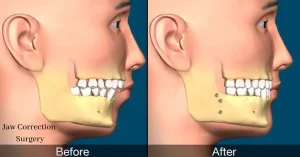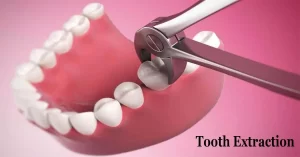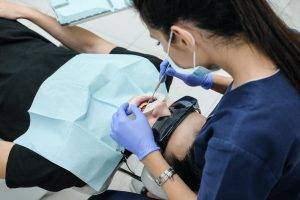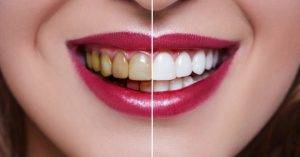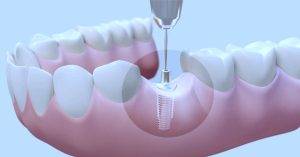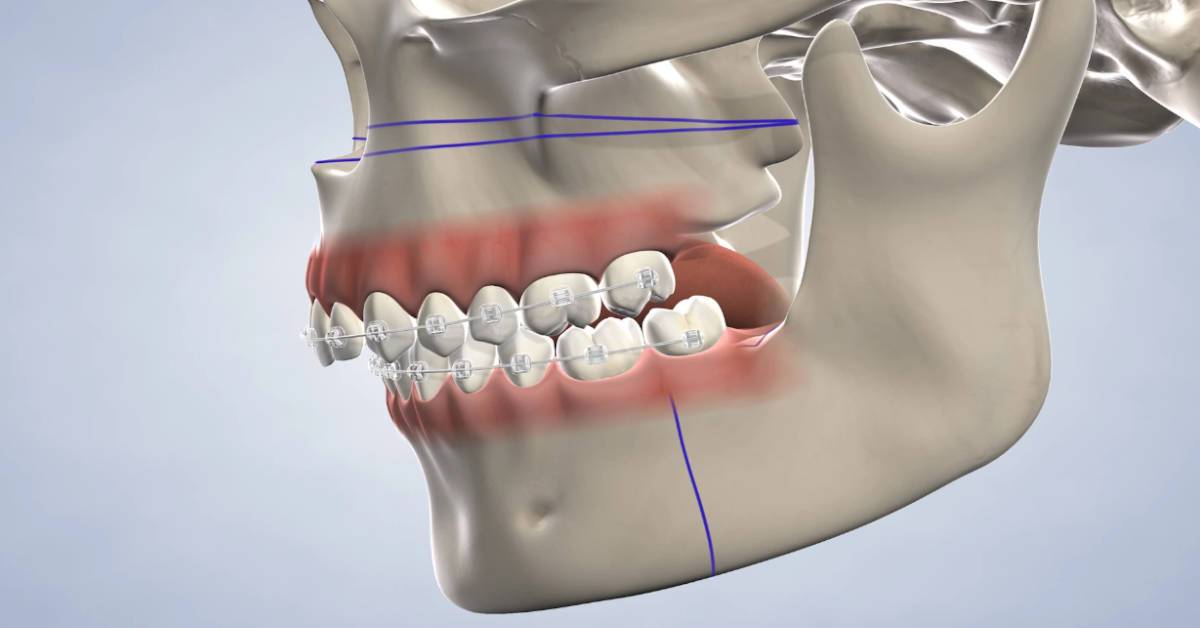
Jaw surgery, also known as orthognathic surgery, corrects irregularities in the jawbones and improves the way the jaw and teeth function. By doing these corrections, the texture of your face can also improve.
Jaw surgery may be a great option if you only have jaw problems with orthodontics. In most cases, braces are placed on teeth before surgery and during post-surgery recovery until healing and alignment are complete. Then, your orthodontist can work with your oral, jaw and facial (maxillofacial) surgeon to determine your treatment plan.
Jaw surgery is appropriate after growth has stopped, usually between 14 and 16 years of age for women and 17 to 21 years of age for men.
Why it’s done
Jaw surgery may help to:
- Makes biting easier and improves overall chewing
- Corrects problems with swallowing or speaking
- Minimizes tooth wear and breakage
- Issues with proper bite or closure of the jaw, such as when the molars touch but the front teeth do not touch (open bites)
- Correct facial imbalances, such as small chins, underbites, overbites and crossbites
- Improve ability to fully close lips comfortably
- Relieves pain caused by temporomandibular joint (TMJ) disorders and other jaw problems
- Repair a facial injury or congenital disability
- Provide relief for obstructive sleep apnea
Risks
Risks of surgery may include:
- Blood loss
- Infection
- Nerve injury
- Jaw fracture
- Relapse of the jaw to the original position
- Problems with bite fit and jaw joint pain
- Need for further surgery
- Need for root canal therapy on selected teeth
- Loss of a portion of the jaw
After surgery, you may experience:
- Pain and swelling
- Problems with eating that can be addressed with nutritional supplements or consultation with a dietitian
- A brief time of adjustment to a new facial appearance
How you prepare for this
In most cases, an orthodontist places braces on your teeth before surgery. Braces are usually on for 12 to 18 months before surgery to level and align your teeth in preparation for surgery.
Your orthodontist and oral and maxillofacial surgeon work together to develop your treatment plan. X-rays, pictures and models of your teeth are part of the planning for your jaw surgery. Occasionally, the difference in the way teeth fit together will require either reshaping the teeth, covering the teeth with crowns, or completing correction.
Three-dimensional CT scanning, computer-guided treatment planning, and temporary orthodontic anchoring devices may help the movement of teeth and decrease your time in braces. Sometimes these efforts eliminate the need for jaw surgery.
Sometimes virtual surgical planning (VSP) will guide your surgeon to fit and correct the jaw segment position during the procedure for the most optimal result.
After this procedure
After the Jaw surgery, the Doctor will provide you with instructions. These usually include:
- What you can eat
- Oral hygiene
- Avoiding tobacco
- Avoiding strenuous activity
- Medications to control pain
- When to return to work or school, which is usually in one to three weeks
Initial jaw healing typically takes about six weeks after surgery, but complete recovery can take 12 weeks.
After initial jaw healing — at about six weeks — your orthodontist finishes aligning your teeth with braces. The entire orthodontic process may take several years, including surgery and braces. Once the braces are removed, retainers to hold the tooth position may be used.
Results
Correcting the alignment of your jaws and teeth with jaw surgery can result in:
- The balanced appearance of your lower face
- Improved function of your teeth
- Health benefits from improved sleep, breathing, chewing and swallowing
- Improvement in speech impairments
Secondary benefits of jaw surgery may include:
- Improved appearance
- Improved self-esteem
